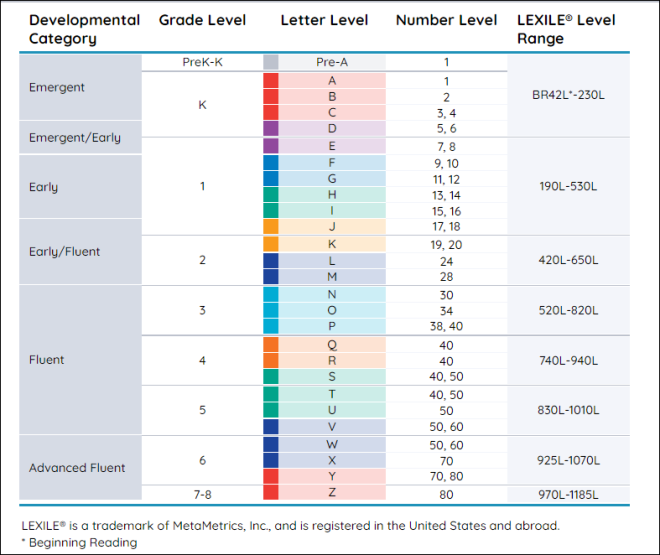|
Reading Lexile Levels by Grade Chart | |||||
|
Understanding a child’s reading level is essential for parents and educators to provide appropriate reading materials. The Lexile Framework for Reading is a widely used tool that measures both a student’s reading ability and the difficulty of a text. This guide provides a detailed Lexile reading levels by grade chart, helping you match books to a child’s reading skills. What Is a Lexile Reading Level?A Lexile measure is a numeric representation of a student’s reading ability or the difficulty of a text. The scale ranges from BR (Beginning Reader) to 2000L, with lower numbers indicating simpler texts and higher numbers representing more complex material.
How Lexile Measures WorkLexile scores help educators and parents:
Lexile Reading Levels by Grade Chart Below is a general breakdown of lexile levels by grade, based on typical student performance in the U.S. Kindergarten Lexile Range At this stage, children are just beginning to read. Most kindergarteners fall under the BR (Beginning Reader) category or have Lexile measures between:
Recommended Books:
1st Grade Lexile Range First graders develop foundational reading skills. Their Lexile range typically spans:
Recommended Books:
2nd Grade Lexile Range Second graders expand their reading fluency. The average Lexile range is:
Recommended Books:
3rd Grade Lexile Range By third grade, students read more independently. The typical Lexile range is:
Recommended Books:
4th Grade Lexile Range Fourth graders handle more complex texts. Their Lexile range is usually:
Recommended Books:
5th Grade Lexile Range Fifth graders engage with more advanced vocabulary and themes. Their Lexile range is:
Recommended Books:
6th to 8th Grade Lexile Range Middle school students read near-adult level texts. The typical Lexile range is:
Recommended Books:
High School Lexile Range High school students prepare for college-level reading. Their Lexile range is:
Recommended Books:
How to Use Lexile Levels EffectivelyWhile Lexile measures are helpful, they shouldn’t be the only factor in book selection. Here’s how to use them wisely: Consider Interest and MaturityA book might be at the right Lexile level but too mature or too childish for a student. Always check content appropriateness. Encourage Challenging (But Not Frustrating) ReadsAim for books within or slightly above a student’s Lexile range to promote growth without causing frustration. Use Lexile Tools for Progress TrackingMany educational platforms (like Lexile® Find a Book) allow you to search for books by Lexile level, making it easier to find suitable options. Final ThoughtsUnderstanding Lexile reading levels by grade helps educators and parents guide students toward books that match their skills. However, reading should also be enjoyable—balance Lexile recommendations with a child’s interests to foster a lifelong love of reading. | ||||
|
 |
